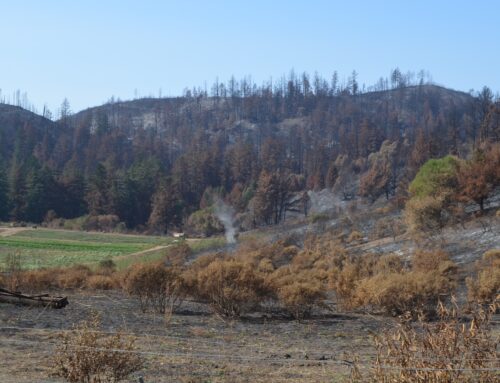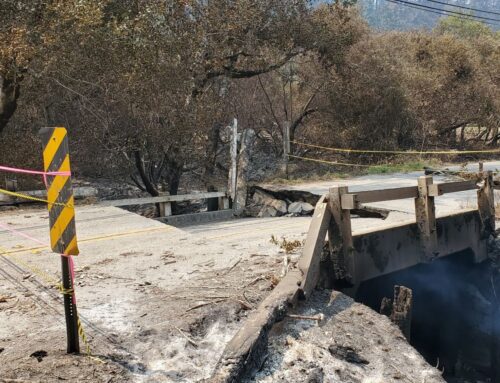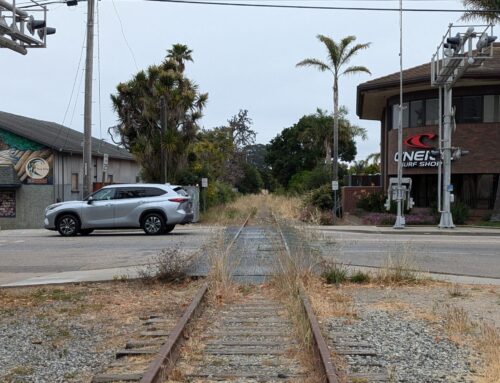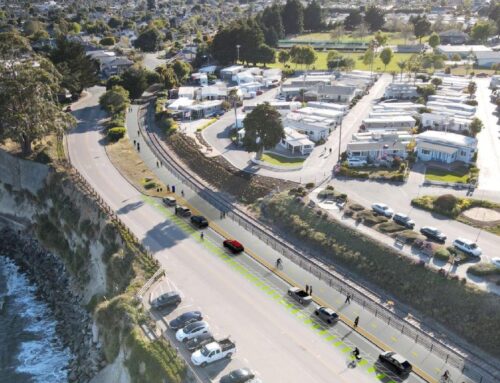SANTA CRUZ >> A glimpse into the next 20 years of planned development at UC Santa Cruz drew some passionate opinions and ideas during two meetings this month, as residents, alumni, graduate students and others critiqued a draft environmental report on the university’s 2021 Long Range Development Plan.
Last week, two online meetings took place to gather more public input on a draft environmental impact report for the 2021 Long Range Development Plan. March 8 is the deadline to submit comments.
Santa Cruz Local offers its news stories free as a public service.
We depend on people like you — we call them our Santa Cruz Local members — to chip in $9 a month or $99 a year to make sure vital information can be available to all. Can we count on your help?
UCSC has produced Long Range Development Plans even before students first enrolled in 1965. Its current plan through 2040 is akin to a city’s general plan in that it prepares for intended buildings and other uses rather than proposes specific projects, said UCSC spokesman Scott Hernandez-Jason. In part because “a large portion” of the university’s budget is tied to state funding, Hernandez-Jason said, it’s not clear if or when the proposed buildings would be built.
The big picture of student growth outlined in the plan is controversial. It would increase the current 18,500 undergraduate and graduate students to up to 28,000, said Jolie Kerns, UCSC’s director of campus planning, during an online presentation Wednesday.
The increase “reflects the original vision for the campus described in the 1963 Long Range Development Plan, which anticipated accommodating 27,500 students by 1990,” the 2021 draft plan states. To teach and support those new students, faculty and staff is proposed to rise from about 2,800 full-time equivalent positions now to 5,000 in the next 20 years, according to the draft plan.
“Actual enrollment is determined by the state in conjunction with individual campuses,” Kerns said Wednesday during a presentation of the 2021 Draft Long Range Development Plan.
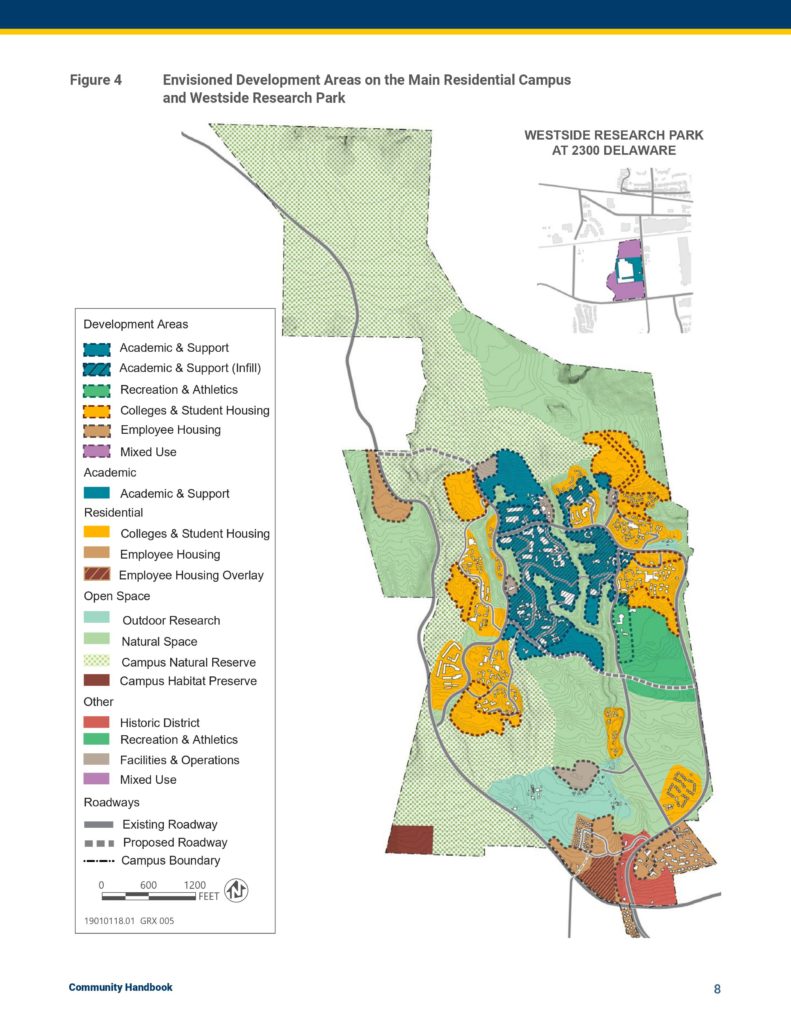
Parts of the campus are already getting upgrades. Kresge College is in the midst of a renovation that includes more housing, a new classroom and other improvements.
“Under the current capital financial plan, the campus is prioritizing the renovation of many existing facilities, including its Science and Engineering Library and several research buildings,” said Hernandez-Jason, the UCSC spokesman.
“Housing (funding) is separate and self-supporting. The funding collected through housing contracts is used for the operation of our housing program, the maintenance of existing buildings, and the construction of new housing units,” Hernandez-Jason said.
Reasons
UCSC leaders’ stated reasons for expansion are in part to produce “more college graduates to fuel economic growth” and provide more paths for social mobility, according to the draft plan.
About 87% undergraduate and graduate students at UCSC are from California. About 9% are international students and 4% are from out of state.
Another reason is demand: 74,000 students applied to UCSC for the 2021-22 school year. That’s an 11% rise from the prior year, the university reported.
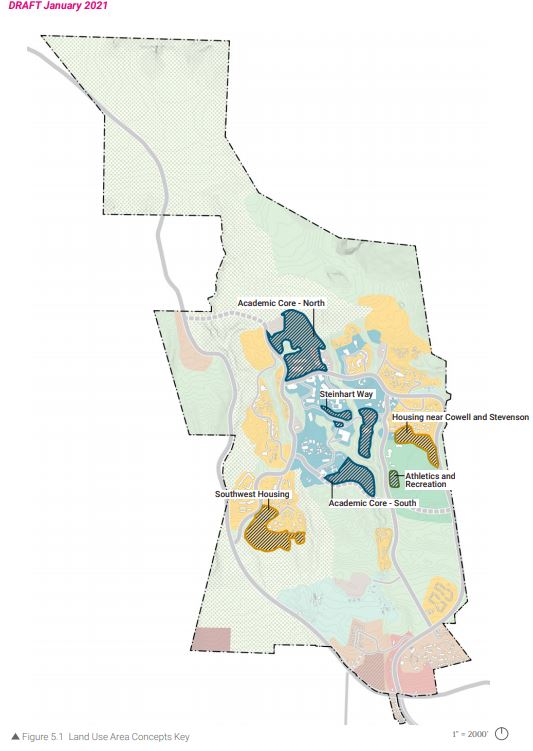
The UC system is also an economic driver with ripples throughout the state, according to a recent Beacon Economics study commissioned by the UC Office of the President. Every dollar invested by UC generates more than $21 in economic output, the report suggests. UCSC is also one of the largest employers in Santa Cruz County and provides more than 3,100 non-academic jobs.
To plan for growth, the draft long range plan essentially breaks the campus into parts and describes current and hoped for buildings for housing, academics, staff and other purposes.
Some of the big housing and development goals in the 2021 Long Range plan and Community Handbook are:
- House more students. UCSC leaders have pledged to provide housing and academic and support space for all new students above 19,500 as outlined in the 2005 Long Range plan.
- House more faculty and staff. The plan aims to increase on-campus housing for faculty and staff on campus and off campus at the Westside Research Park at 2300 Delaware Ave., Santa Cruz. The plan sets a goal to allow up to 25 percent of the increase in faculty and staff to be housed on campus, according to the LRDP Community Handbook. If faculty and staff were to grow by 2,200 full time equivalents as proposed, that would mean UCSC would house 550 of them.
- Compact development. “Ensure compact and clustered development of academic, administrative, and support facilities in the academic core and student housing and colleges around the periphery to facilitate shared resources, provide convenient access, and promote pedestrian circulation.”
- Protect open space on campus. “Protect, to the extent feasible, existing campus open spaces in the built environment.”
- Provide event space and academic facilities. The aim is to be a regional center for public cultural life.
- Reduce single-person car trips to campus. The plan aims to improve roads and support transit with peripheral parking and “mobility hubs.”
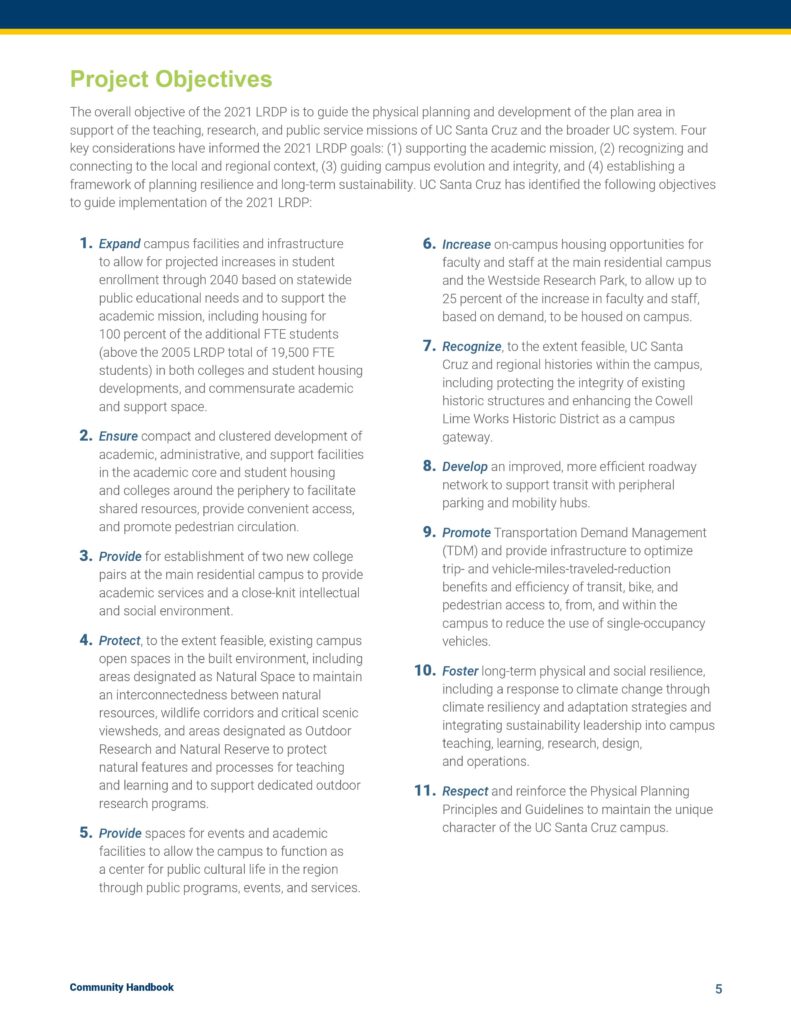
Off campus, the plan describes plans for 2300 Delaware Ave. at Natural Bridges Drive. UCSC bought 18 acres there from Texas Instruments in 2004.
There are three buildings there now for academics and administration, including science and engineering research, the Genomics Institute and other research programs. The Long Range plan envisions housing on the site, academic uses and “mixed use.”
Feedback
Santa Cruz County Supervisor Ryan Coonerty worked on a Santa Cruz City-County Task Force on UCSC Growth Plans before the draft environmental report was published. While Coonerty is a longtime Legal Studies lecturer at UCSC and called the university an “incredible asset” intellectually and culturally, he said the Long Range plan needs to guarantee housing for all new students, faculty and staff on campus.
“Given the severity of our local housing crisis, natural resource insecurity, and immense responsibility to steward our unique environment (among other imperatives), it is important that we advocate for a responsible campus plan that includes legally-binding commitments,” Coonerty wrote in his January newsletter to constituents. Coonerty also wanted all growth impacts “mitigated” and all the “resources and infrastructure” in place before new students, faculty or staff are added.
Some people at this week’s online meetings gave similar opinions. “Measures need to ensure that the housing will be provided and when they’ll be provided in order to avoid significant off campus and on campus impacts,” said Andy Schiffrin, chairman of the city of Santa Cruz Planning Commission and a UCSC instructor.
Rick Longinotti, co-chair of the Santa Cruz-based Campaign for Sustainable Transportation, commented that the 1988 Long Range plan aimed to house 70% of undergraduates on campus. It hasn’t happened, he wrote in his comments to the Long Range plan draft environmental report.
Rebecca Ora, president of UCSC’s Graduate Student Association, said she believed “students are not for this.” Ora noted that UCSC’s undergraduate Student Union Association voted in favor of freezing enrollment size. “Keep UC Santa Cruz the way it is, which actually should resemble a small liberal-arts school,” Ora said.
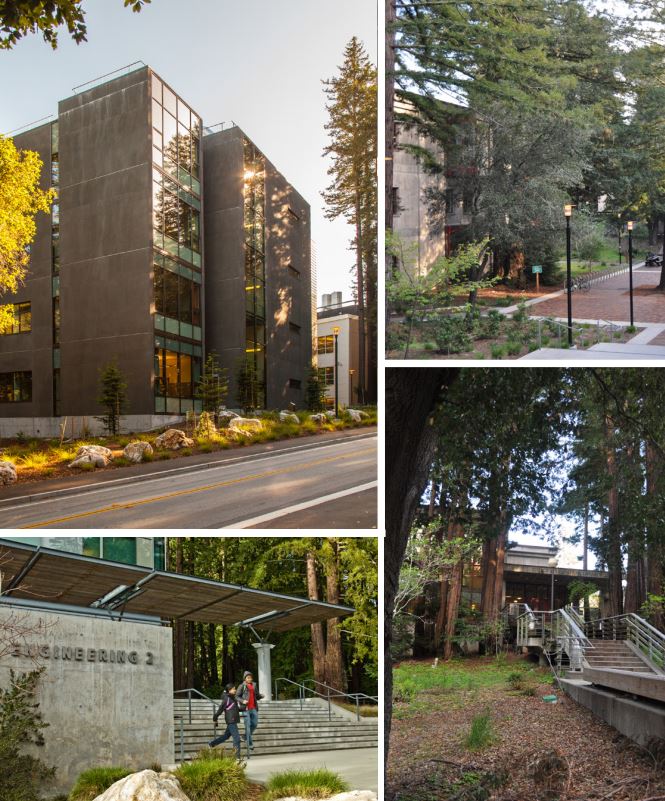
Others at last week’s meetings on the draft environmental report said they were against building on the East Meadow on campus. That’s the subject of a separate lawsuit. Still others said they worried about added water use in the city of Santa Cruz water system.
Water
“Overall campus water demand is projected to increase by almost 60 percent over Fiscal year 2017-18 water use,” according to the 2021 Long Range plan.
Its plan is to use an aquifer in the “central and lower portions of the campus” to get drinkable and non-drinkable water. The karst aquifer has “sufficient recharge to provide sustainable yield,” according to the Long Range plan.
The plan also relies on more rain harvesting on campus to offset drinking water use and comply with stormwater management requirements.
A third strategy is legal. In October, UCSC and the UC Regents sued the city of Santa Cruz essentially for “attempting to go back on its contractual obligation” and “refusing to supply the water necessary for development of the campus.” The suit alleges that more than 50 years ago, two contracts between the UC Regents and city ensured that the city would provide the water necessary to support campus development.
Shortly after the lawsuit was filed, then-Santa Cruz Mayor Justin Cummings and UCSC Chancellor Cynthia Larive issued a joint statement. “A court ruling is the best route to settle the long-standing dispute the university and the city of Santa Cruz have regarding access to water service throughout the UC Santa Cruz campus.” The statement continued, “It demonstrates a shared desire to resolve this disagreement, allowing the university and the city to plan for the future.” The lawsuit has not been resolved.
Rosemary Menard, director of the city of Santa Cruz Water Department, said a formal city response to the Long Range plan draft environmental report would include details on water.
In an interview last week, she added two important points:
- As the number of people on campus — including faculty and staff — has doubled in recent years, water use has remained essentially flat, Menard said. A Preliminary Long Term Water Demand Forecast released this month factored in UCSC demand, Menard added.
- However, “The water supply problem we have here is a problem if not one more person comes here,” Menard said. The system essentially relies on water storage at Loch Lomond Reservoir, and streams and rivers for the rest. “The problem is we don’t have enough storage to get us through droughts, particularly multi-year droughts,” Menard said. “UCSC is marginal compared with what it will take to solve the problem.”
Stephen Baxter is a co-founder and editor of Santa Cruz Local. He covers Santa Cruz County government.


